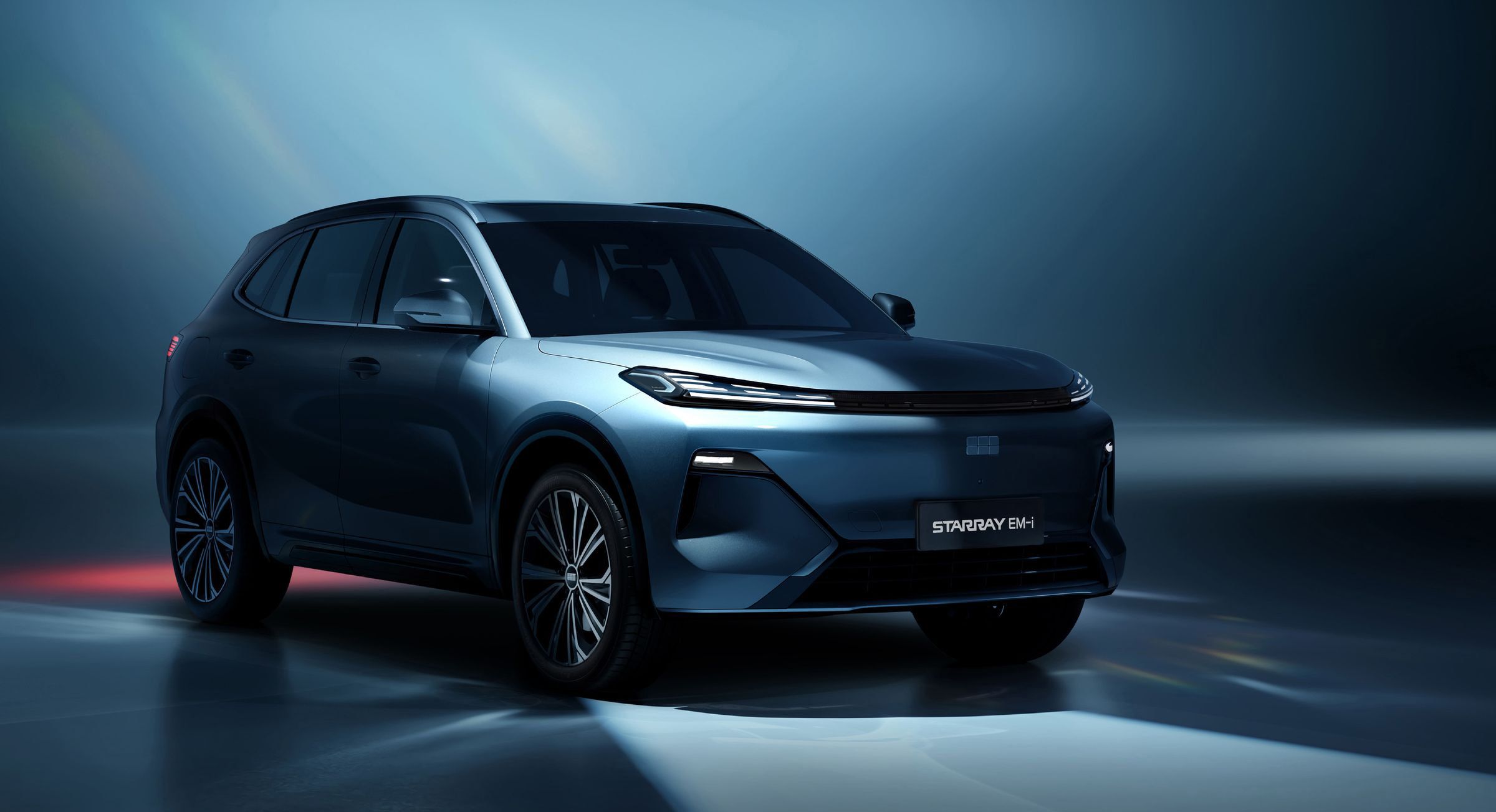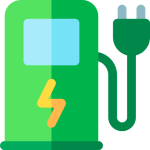
The family SUV battlefield in Australia is tougher than a backyard cricket match for the last wicket. Every major player, from Toyota to Kia, is slugging it out. But now, a new contender from China, the 2025 Geely Starray EM-i Inspire, has charged onto the pitch with a simple, devastating strategy: unbeatable value and genuinely usable electric efficiency.
It’s a Plug-in Hybrid Electric Vehicle (PHEV) that aims to deliver the EV-lite experience Australians are craving, without the range anxiety that still plagues some all-electric models. But before you whip out your wallet, there are a few necessary caveats. As the blog title suggests, this Inspire variant—the top-spec model—has a few rough edges. Yet, when you stack up what you get for the sticker price, the Starray’s disruptive presence in the medium SUV segment is impossible to ignore.
💰 The Price is Right: Disrupting the PHEV Market
Let’s talk dollars, because this is where the Starray EM-i delivers its first, most powerful blow. With the top-spec Inspire variant launching at a price point under the psychological $40,000 mark (before on-road costs), Geely has positioned it aggressively. It directly undercuts key rivals like the BYD Sealion 6 and other established PHEV competitors, making it one of the most affordable plug-in hybrid options available to Australian families.
This isn’t a cut-price special either; the Inspire trim is stuffed with gear. We’re talking 19-inch alloys, a massive panoramic sunroof, ventilated front seats (a godsend in the Aussie summer!), a premium 16-speaker audio system, and a power tailgate. The sheer volume of features that come standard would cost you a small fortune in an equivalent European or even Korean SUV. This exceptional value proposition makes the Starray EM-i a genuine headache for the competition and an absolute win for the consumer.
⚡ Real-World Efficiency: The ‘Super Hybrid’ Promise
The Starray’s core appeal lies in its “Super Hybrid” powertrain. Mating a 1.5-litre petrol engine with an electric motor and an 18.4kWh (gross) LFP battery, it’s engineered to prioritise electric driving.
The real-world range is the star here. Geely claims an 83km (WLTP) pure-EV range, and early Australian reviews suggest figures between 60km and 80km are easily achievable in real-world urban driving. For the average Australian commuter, this means you can likely complete your entire daily drive using zero petrol. You get the instant torque and silent smoothness of an EV for the school run and work commute, relying on the petrol backup for longer weekend trips.
And when running in hybrid mode, the consumption is genuinely frugal. While the official WLTP figure is as low as $2.4 L/100km, reviewers have consistently seen excellent results. With a 51-litre fuel tank and the electric boost, the combined total range of over 900 km means you’ll be stopping for a coffee before you stop for a refill. The PHEV formula, done right, offers peace of mind that an all-electric car still struggles to match in the eyes of many suburban families.
🧑🤝🧑 Family-Friendly Space and Premium Feel
Stepping inside the Starray EM-i Inspire reveals another pleasant surprise: a cabin that genuinely punches above its price point.
- Premium Presentation: The interior materials are a cut above what you’d expect from a budget-focused offering. Plush synthetic leather (called Geeluxe), metallic surfaces, and high-quality trim create a notably upscale cockpit.
- A Roomy Retreat: Built on Geely’s dedicated Global Intelligent New Energy Architecture (GEA) platform, the space utilisation is excellent. The cabin is generous in all directions, offering plenty of legroom and headroom for both front and rear passengers. The rear seats, in particular, are comfortable and accommodating, complete with air-con vents and USB ports—a must-have for modern family life.
- Boot Space: Cargo capacity is solid, starting at $528 \text{ litres}$ (with the floor in the lowest position) and expanding to a huge $2,065 \text{ litres}$ with the rear seats folded. It’s practical, flexible, and ready to swallow all the gear an Aussie family can throw at it.
The centrepiece is the large 15.4-inch portrait-oriented infotainment screen. While the tech is impressive, featuring wireless Apple CarPlay (and promised wireless Android Auto via a Q1 2026 OTA update), it also leads us to the car’s primary drawback.
🚩 The Issues: Where the Polish Fades
As great as the value and efficiency package is, the Starray EM-i Inspire is not without its faults, and these are focused on two critical areas that matter deeply to Australian drivers: dynamic refinement and driver assistance systems.
1. The Driving Experience
While the ride is generally comfortable around town, soaking up bumps and potholes with a soft, cushy setup, the dynamic handling can be “flabby” once the speed picks up. Australian reviewers noted a feeling of being under-damped, leading to excessive body roll and an unsettled “wobbly” feeling on rougher highways and undulating country roads. The steering is often described as vague and lacking feel, requiring constant micro-corrections on the straight ahead. Geely has reportedly given the Australian-delivered cars a “firmer” tune, but it clearly still needs more finesse to match the handling of established rivals.
2. Overbearing Technology
The second major criticism revolves around the poorly calibrated driver assistance systems. The speed limit monitoring and lane-keeping assist are described as overly intrusive, generating constant, annoying beeps and making jarring steering corrections. Frustratingly, these systems often default back to ON every time the car is started, requiring a multi-step process through the touchscreen to deactivate—a common, yet infuriating, oversight on many Chinese-market vehicles adapted for global sale. This lack of user-friendly technology integration detracts significantly from the otherwise premium cabin experience.
✅ The Final Verdict: Value Triumphs Over Flaws
The 2025 Geely Starray EM-i Inspire is a classic case of balancing pros and cons.
| The Undeniable Pros | The Recognised Cons |
| Unbeatable Value and features for the price. | Overly Intrusive driver assistance systems. |
| Excellent 83km Pure-EV Range for daily use. | Unrefined Dynamics with vague steering and soft ride at speed. |
| Premium-feeling and spacious family interior. | Noisy petrol engine when the battery is depleted or under hard acceleration. |
| Strong total range and low hybrid fuel consumption (around 4L/100km). | No spare wheel (tyre repair kit only). |
For the family primarily doing urban and suburban driving who wants a taste of electric life with the security of petrol backup—and absolutely must maximise their budget—the Geely Starray EM-i Inspire is an overwhelmingly compelling choice. You can live in the 80km electric bubble for your daily grind, and when the engine does kick in, the fuel consumption is still excellent.
Yes, Geely needs to fine-tune the dynamic handling and urgently fix those frustrating driver alerts via an over-the-air update. But right now, the sheer scale of the Starray’s value proposition and its highly effective PHEV efficiency means its success in the Australian market is undeniable. It’s a statement that the new wave of Chinese cars isn’t just about being cheap; it’s about delivering more for less, and that’s a message that resonates powerfully with Australian families.
Comparing the Geely Starray EM-i Inspire with Australian Rivals: Range, Power, and Price Analysis vs BYD Sealion 6 and Chery Tiggo 7 Super Hybrid
Based on the latest Australian specifications and pricing, here is a direct comparison of the Geely Starray EM-i Inspire against the comparable base models of the BYD Sealion 6 and Chery Tiggo 7 Super Hybrid.
🔌 PHEV Medium SUV Key Specifications Comparison (Australia)
| Feature | Geely Starray EM-i Inspire (PHEV) | BYD Sealion 6 Essential (PHEV) | Chery Tiggo 7 Super Hybrid Urban (PHEV) |
| Price (Base Model) | $39,990 plus ORCs | $42,990 plus ORCs | $39,990 Drive-Away |
| Pure EV Range (Claimed) | 83 km (WLTP) | 92 km (SOC 25%-100%) / 140 km (Dynamic Extended, SOC 20%-100%) | 90 km (Approx. from 93km NEDC) |
| System Power (Combined) | 193 kW (1.5L NA + motor) | 160 kW (1.5L NA + motor) | Not officially listed (Motor is 150kW) |
| Combined Fuel Cons. | 2.4 L/100km (Claimed) | 1.1 L/100km (Essential) / 0.8 L/100km (Dynamic Extended) | 1.4 L/100km (Claimed) |
| Battery Capacity | 18.4 kWh (LFP) | 18.32 kWh | 18.4 kWh |
Note: Pricing is for the base model where available (Starray EM-i Inspire is the upper spec but often promoted similarly to the Chery’s base model), and is subject to change. ‘plus ORCs’ means plus On-Road Costs (e.g., registration, stamp duty, dealer charges).1
Detailed Analysis of Key Metrics
1. Price
- Chery Tiggo 7 Super Hybrid Urban: Is the most affordable when considering its $39,990 Drive-Away price, which includes all on-road costs.
- Geely Starray EM-i Inspire: At $39,990 plus ORCs, it is priced competitively against the Chery’s base model (though the Inspire is a higher-spec model), but the final drive-away price will be higher than the Chery.
- BYD Sealion 6 Essential: Is the most expensive of the base-model comparisons at $42,990 plus ORCs.
Winner for Entry Price: Chery Tiggo 7 Super Hybrid (due to the Drive-Away pricing).
2. Pure EV Range
- All three vehicles offer a competitive pure electric range of around 83 km to 92 km on a single charge.
- The BYD Sealion 6 offers an optional Dynamic Extended Range model at $$46,990 plus ORCs) that extends the claimed EV range to a class-leading 140 km.5
Winner for Pure EV Range (Base Model): BYD Sealion 6 Essential (92 km), although the difference is minor.
3. System Power
- The Geely Starray EM-i has the highest combined power output at 193 kW in the models compared, suggesting potentially brisker performance.
- The BYD Sealion 6 Essential is slightly lower at 160 kW, but its top-spec Premium AWD model jumps to a class-leading 238 kW (at a higher price).
- The Chery Tiggo 7 Super Hybrid does not list a combined figure, but its electric motor is a strong 150 kW.
Winner for Power (Base Model): Geely Starray EM-i Inspire (193 kW).9
Summary
| Vehicle | Best Feature in Comparison | Consideration |
| Geely Starray EM-i Inspire | Highest Power (193 kW) in the base/Inspire models. | Good blend of power, range, and value. |
| BYD Sealion 6 Essential | Highest Pure EV Range in the base model (92 km) and a longer range Extended model (140km) is available. | Highest starting price in this comparison. |
| Chery Tiggo 7 Super Hybrid Urban | Cheapest Drive-Away Price at $39,990. | Lowest power output listed (though motor is strong) and has a turbo-petrol engine. |
About EV Evolution
EV Evolution is the leading online platform dedicated to Australian electric vehicle owners and enthusiasts. We foster a vibrant community, delivering essential EV news and insights, and enhancing user engagement through our innovative, AI-powered chatbot for dynamic discussions. Our mission is to empower Australian electric vehicle owners and enthusiasts by fostering a vibrant, AI-driven online community that connects, informs, and advances the nation’s electric vehicle landscape.




